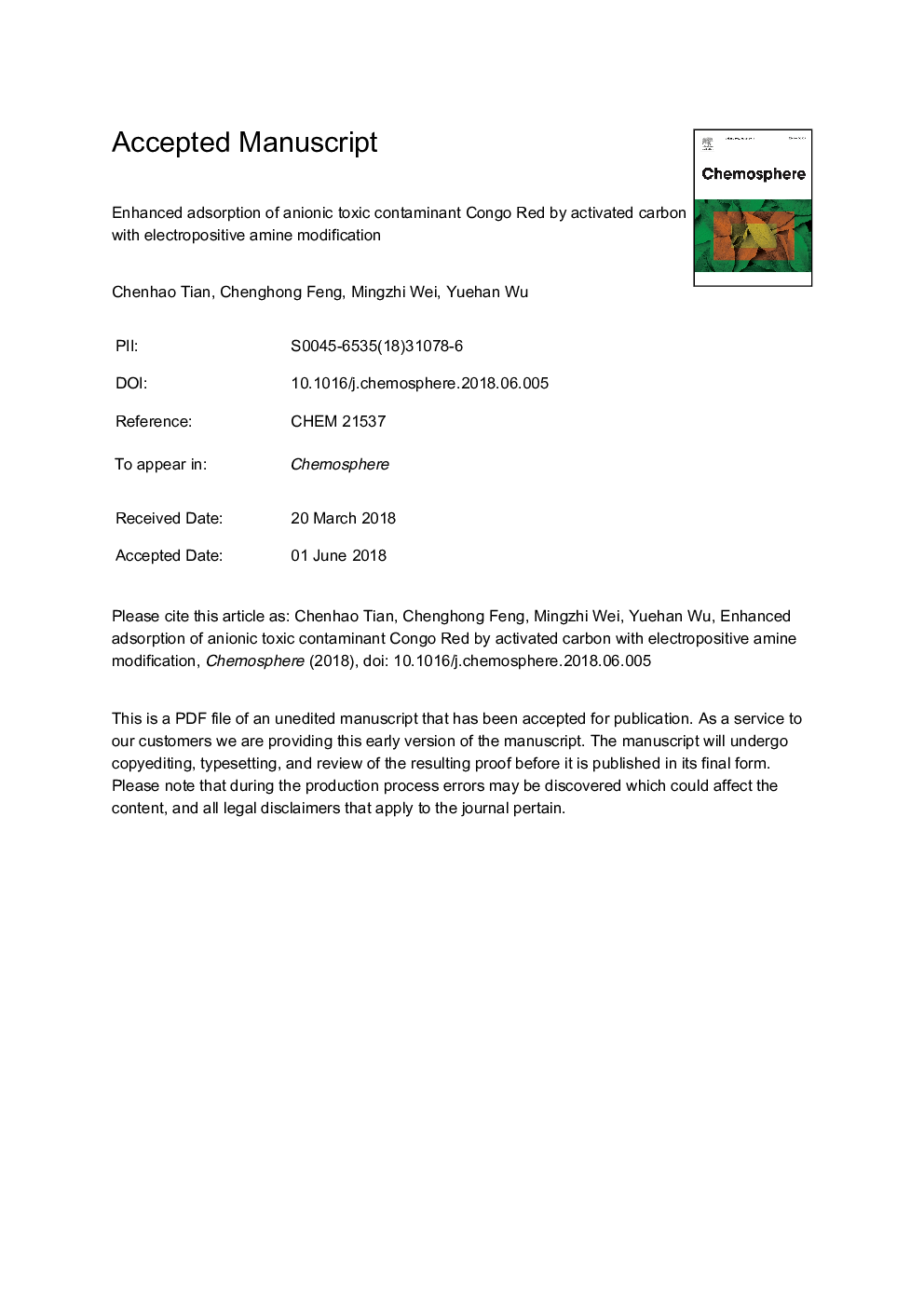| Article ID | Journal | Published Year | Pages | File Type |
|---|---|---|---|---|
| 8850801 | Chemosphere | 2018 | 32 Pages |
Abstract
Anionic ionizable toxic organic contaminants, such as pesticides, herbicides, pharmaceuticals and dyestuffs, are widely detected in aqueous and can exert specific toxicity in organisms. They are hard removed by traditional adsorbents with negative surface charges and hydrophilic property. To solve that bottleneck problem, this study synthesized a carbon-based electropositive absorbent via surface activation and radical impregnation. The monolayer adsorption capacity and favorability of the novel adsorbent increased 4.2 and 16 times compared with activated carbon, evaluated by Congo Red. The adsorption kinetics could be described by pseudo-second-order equation, dominated by chemisorption and shortened 75% equilibrium time. The excellent adsorption behavior of synthesized material was attributed to created and bridged electropositive quaternary ammonium structure onto activated carbon, identified with XPS and FT-IR. Additionally, the abundant mesoporous structures of modified carbon provide more tunnels and facilitate adsorption of Congo Red, identified by AutoSorb-iQ. With the batch experiments of pH and ion strength influence, the absorbent behaved well in acidic low ion strength conditions and attenuated by coexisting cations. The study provides a high efficiency, large capacity and low cost materials to remove anionic ionizable organic contaminants in aqueous.
Keywords
Related Topics
Life Sciences
Environmental Science
Environmental Chemistry
Authors
Chenhao Tian, Chenghong Feng, Mingzhi Wei, Yuehan Wu,
